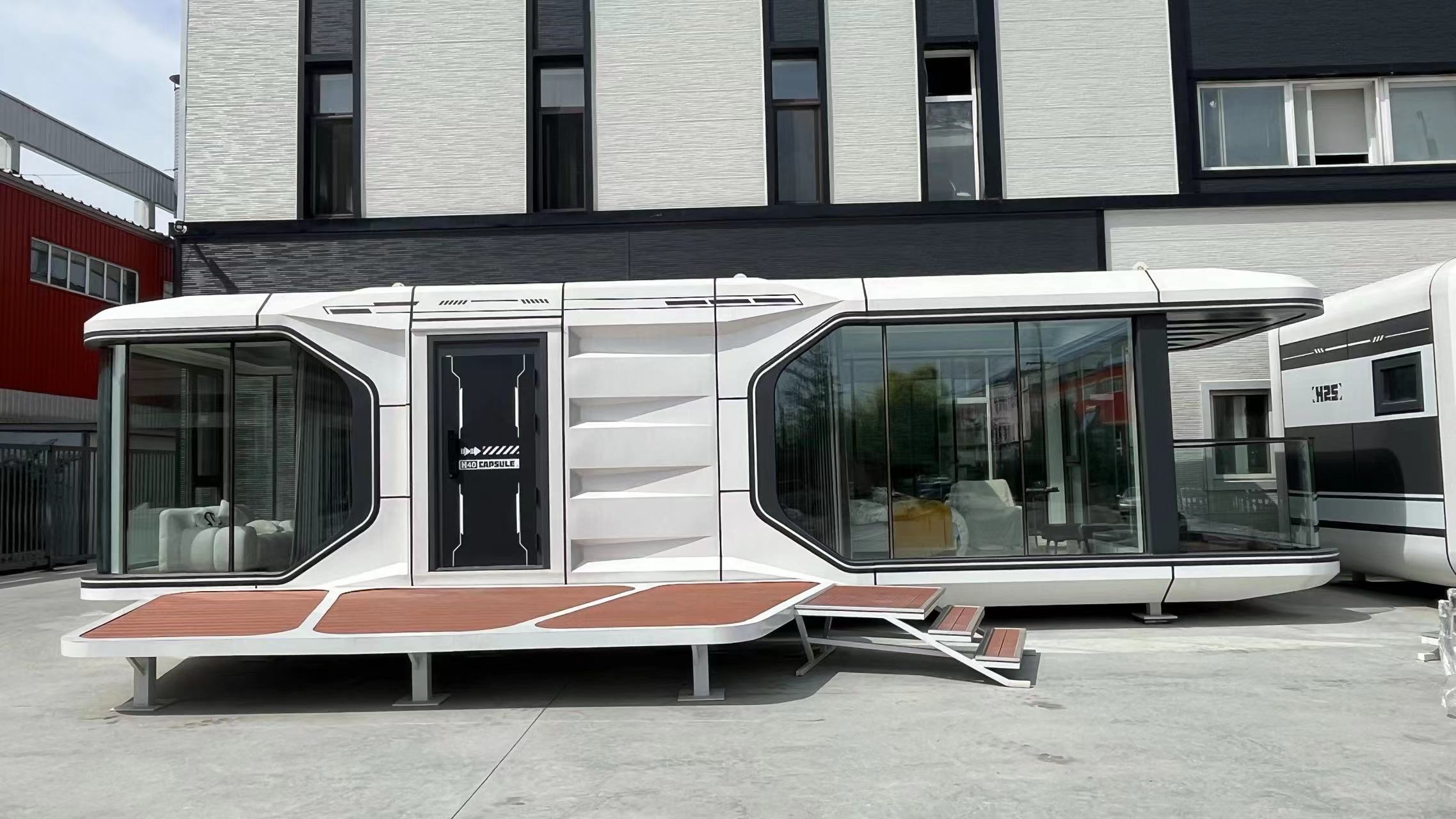In today's pursuit of high-quality living, sound insulation in houses is a key measure of comfort. For the uniquely designed and compact Space Capsule House, its sound insulation is under the spotlight. Multiple factors affect the sound insulation of a Space Capsule House, including building materials, structural design, construction techniques, and usage environment. This article delves into the sound insulation of Space Capsule House.
I. The Impact of Building Materials on Sound Insulation
(i) Wall Materials
Walls are crucial for sound insulation in a Space Capsule House. Many use composite walls with an outer layer of high-strength metal or fiber cement boards for durability. The middle is filled with soundproof materials like rock wool, glass wool, or polyurethane foam. Rock wool absorbs sound waves with its porous structure. Glass wool converts sound energy to heat, and polyurethane foam blocks sound with its closed-cell structure. This composite design effectively reduces external noise.

(ii) Door and Window Materials
Doors and windows, as connections between the house and outside, are weak points in sound insulation. High-quality Space Capsule House designs focus on soundproofing here. Windows often use double or triple glazing with inert gas (like argon) between layers, which can improve sound insulation by 20 - 30 decibels compared to single glazing. The window frames are made of soundproof materials like aluminum with thermal breaks or PVC, and are well-sealed. Doors are typically solid-core soundproof doors with internal soundproof material and sealing strips to block external noise.
II. Structural Design for Enhanced Sound Insulation
(i) Overall Sealing
The structural design of Space Capsule House significantly impacts sound insulation. Good sealing is essential for soundproofing. During assembly, all parts are precisely connected and sealed with sealing strips and sealants. This prevents noise from entering through gaps. The roof and floor are also treated with soundproof layers to minimize noise between floors.
(ii) Vibration Reduction Design
Vibration is another source of noise. Space Capsule House structures often include vibration reduction measures. Shock absorbers or pads are installed at the bottom of the house to absorb and cushion vibration energy, reducing its impact on the structure and lowering vibration noise. Equipment like air conditioners and pumps are fitted with anti-vibration brackets to prevent noise from transmitting to the structure.
III. The Role of Construction Techniques in Sound Insulation
Construction techniques directly affect the sound insulation of Space Capsule House. Every detail matters. For example, soundproof materials must be closely fitted without gaps. Wall and window/door installations must be precise to avoid gaps. Penetrations for pipes and wires must also be sealed and soundproofed. Only by strictly following construction standards and focusing on details can the expected sound insulation of Space Capsule House be achieved.
IV. The Influence of Usage Environment on Sound Insulation
(i) External Noise
The usage environment greatly affects the sound insulation of Space Capsule House. If located near busy roads, airports, or factories, even a well-soundproofed Space Capsule House may experience some noise interference. External noise intensity and frequency are key factors. High-frequency noise (e.g., aircraft roars, car horns) can be significantly reduced by proper materials and design. Low-frequency noise (e.g., vehicle vibrations, (industrial rumbles), with its long wavelength and far dissemination distance is harder to block and requires special measures like shock absorbers and low-frequency soundproof materials.
(ii) Internal Usage
Internal activities also affect sound insulation. Loud noises, music, or noisy equipment inside Space Capsule House can create internal noise, reducing comfort and potentially spreading to adjacent rooms or outside. Controlling internal noise is crucial. During renovation, use sound-absorbing materials like acoustic wallpaper and curtains to reduce reflections. Choose low-noise appliances and use them at appropriate times and locations to avoid disturbance.
The sound insulation of Space Capsule House depends on building materials, structural design, construction techniques,and usage environment. With quality soundproof materials, well-designed structures, and careful construction, Space Capsule House can achieve good sound insulation, creating a quiet and comfortable living space. However, external and internal factors can still impact sound insulation in actual use, requiring corresponding optimization. As technology advances and living standards rise, the sound insulation of Space Capsule House will likely improve, offering a more peaceful living experience.

